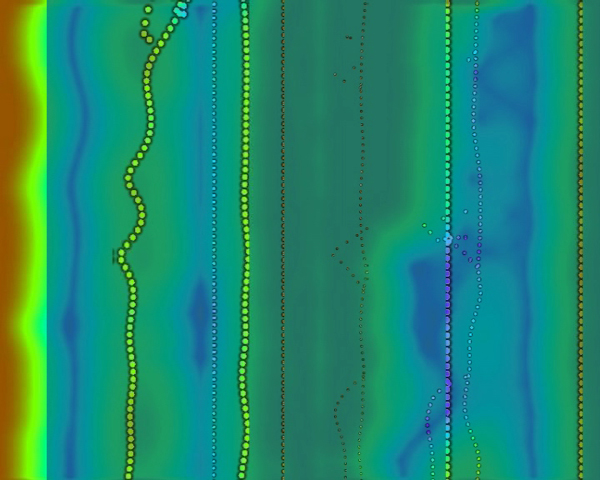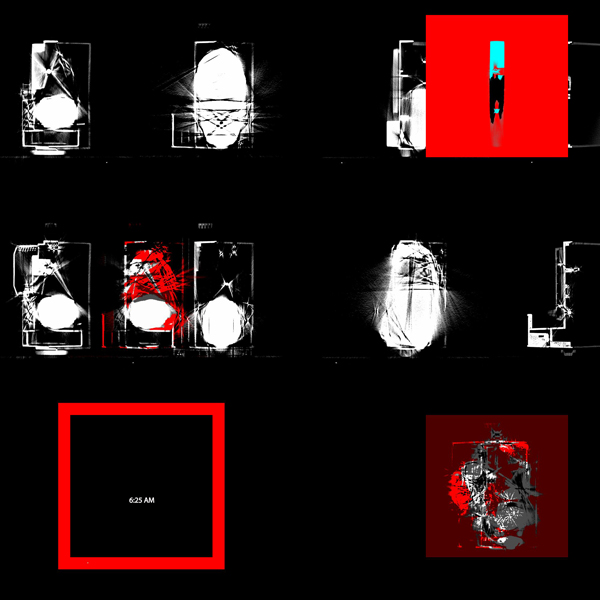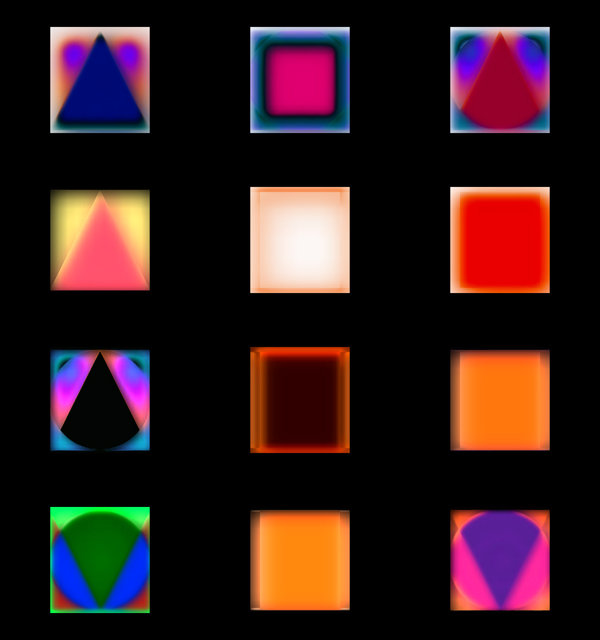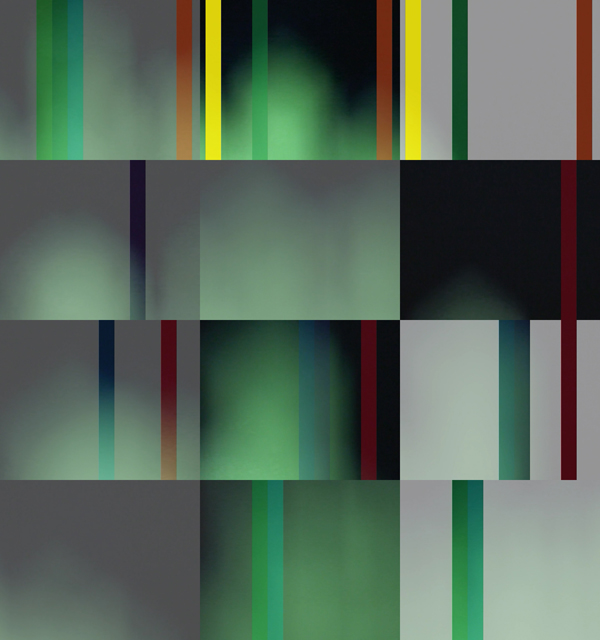Synchrony (synthesis of text, sound and picture), 2011.
We are going back to the beginning, to the magical era, when sound and spectacle were presented together, when the formation was natural between speech/singing/music and writing/picture. All the things became more complicated in the history. The different mediums make their fusion again in our 'new magical era' (Vilém Flusser). A 'melting pot' is the environment of the computer. All the information gets to the platform of the binary numbers. This state of information is synthetic (unnatural). By the aid of the software and hardware the Visual Music get more to the focus of attention again.
I have started such an experiment of media art, where the starting points in every case are chosen, or written text-fragments (sentence, slogan, title). These text forms are set to sound/music by the help of Braille-writing and geometrical structures. The texture of the text is similar to the structure of the music. In connection with the 'Synchrony' the text/sound joins with the visual elements (animation). I seek for the 'natural passages' between the various mediums, an expression of arts. The correspondences have two features: strictly mechanics (e. g. relationships of colors and sound - see also Isaac Newton) and based on free associations (e. g. forms, ratios). The common appearance of contrasts, counterpoints, harmonies are on different 'layers', associating with the sound-groups 'expanded' colors, with the stresses flashing geometrical forms and the atmosphere 'vibrating background-animation'. This is together a new form of synchrony (e.g. Synchrony 1-7, Visual Music: Hey Water, Hey Fire!, Hey You've Got To Hide Your Love Away, Erik Satie's Vexations, L. E. D., Across the Universe, How Do You Say, None Of Us Is As Good As All Of Us, 2010-2011).
Szinkrónia (szöveg, hang és kép szintézise)
Az egyes médiumok összeolvasztásának folyamata jelenünk része, melyet a számítógépes környezet flexibilitása és más, kapcsolható „képességei” alapoznak meg. Túllép(t)ünk a médiumok megnevezhetőségének határain; az „olvasztótégelyben” a metamédia (posztmediális) világa tárul fel (Lev Manovich). Ez a „közeledés” – az interdiszciplináris szemléleten túl – új típusú szintézist generál. A művészet ilyen jellegű „fúziója” sokkal természetesebb módon illeszkedik a „való világhoz”, melyre minduntalan reflektál.
Visszajutottunk a kezdetekhez, a mágikus korba, ahol a hang és a látvány együtt jelentkezett, ahol a beszéd és az írás, az ének/zene és a kép átjárhatósága természetes volt. A történelem során a dolgok túlspecializálódtak, szétváltak. Napjainkban, ebben az új mágikus korban (Vilém Flusser) ismételten fúzionálnak a különböző médiumok (sőt összeolvadnak). Ehhez a számítógépes környezet nyújtja az alapokat, keretet. Itt minden információ egy platformra kerül, az olvasztótégely folyamatosan működik. A számokba kódolt információ szintetikus, ilyen formájában természetellenes. Visszatértünk (egy másik síkon) a kezdetekhez. A vizuális zene újból aktuálissá vált, központi szerepet kaphat a művészetben.
Egy olyan (szintetizáló) médiaművészeti kísérletet indítottam el, ahol minden esetben egy kiválasztott, vagy megírt szöveg-töredék (mondat, szlogen) a kiindulási alap. A szöveg a Braille írás és különböző rendszerű geometriai szerkesztések segítségével hangzó anyaggá (zenévé) formálódik. A „Szinkróniában” a szöveghez-hanghoz vizuális elemek társulnak (animáció). Az egyes médiumok, kifejezési formák között keresem a „természetes” átjárhatóságot. A megfeleltetések kettősek: szigorúan mechanikusak (pl. színkör rendszere és hangzások, vö. Isaac Newton) és valamivel kisebb mértékben szabadok, asszociáción alapulnak (pl. a formák, az arányok). Kontrasztok, ellenpontok, harmóniák együttes szerepeltetése több „síkon” (layeren) jelenik meg. A hangcsoportokhoz „kitartott” színek, a hangsúlyokhoz bevillanó geometrikus formák, az atmoszférához „rezegtetett animáció” társul. Ez együtt a „szinkronizáció” egy újabb formája (pl. Szinkrónia 1-7, vizuális zene: Hey Water, Hey Fire!, Hey You've Got To Hide Your Love Away, Erik Satie's Vexations, L. E. D., Across the Universe, How Do You Say, None Of Us Is As Good As All Of Us, 2010-2011).
Gyenes Zsolt, 2011. 04. 02.





